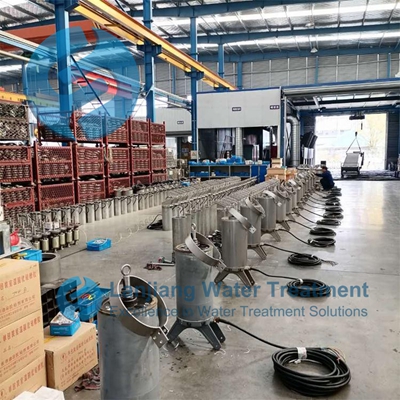When comparing the power savings of propulsion and paddle mixers, a number of factors need to be considered, including the power of the mixer, mixing efficiency, working conditions, and specific application scenarios. Since direct comparison of the power saving of the two requires specific data and experimental conditions, and no direct comparative data is provided in the reference article, the following analysis will be based on the general characteristics and application scenarios of mixers.

First, the propulsion mixer
1. Features:
- Propulsive mixers usually have a large pushing capacity and can form a circulating flow in the reactor, especially suitable for large-scale, low-viscosity liquid mixing.
- Its stirring power is relatively small, but it can produce a significant volume cycle effect, which helps to reduce the mixing time and improve the mixing efficiency.
2. Power saving analysis:
- In scenarios where large flow cycles and even mixing are required, propulsion mixers may be more power-efficient, as they can achieve efficient mixing at lower power levels.
- However, if the application scenario does not require such a strong circulation effect, the propulsion mixer may waste energy due to unnecessary circulation flow.
Second, paddle mixer
1. Features:
- Paddle mixers are simple in structure and suitable for smaller mixing tasks.
- The stirring effect mainly depends on the shearing force and driving force generated by the rotation of the blade, and is suitable for the mixing of liquids with moderate viscosity.
2. Power saving analysis:
In scenarios where simple mixing is required and circulation flow is not required, paddle mixers may be more power-efficient as it does not need to generate additional circulation flow to consume energy.
However, if the mixing task requires a high mixing uniformity or needs to handle high viscosity liquids, paddle mixers may require higher power and longer mixing times, increasing energy consumption.
Third, comprehensive comparison
1. Application scenario: the propulsion mixer is more suitable for large-scale, low-viscosity liquid mixing and the scene that requires circulation flow; The paddle mixer is suitable for small scale, moderate viscosity liquid mixing.
2. Power saving: It is not possible to directly give the conclusion of which of the two is more power saving, because it depends on the specific application scenario and demand. In suitable application scenarios, both can achieve a relatively energy-saving stirring effect.
Fourth, Conclusion
In order to determine which of the propulsion and paddle mixers is more power efficient, a number of factors need to be considered, including the power of the mixer, mixing efficiency, working conditions and specific application scenarios. In practical applications, it is recommended to choose the appropriate mixer type according to the actual demand, and further reduce the energy consumption by optimizing the mixing process and parameters.
It should be noted that the above analysis is only based on the general characteristics and application scenarios of the mixer, and does not involve specific data and experimental conditions. In practical applications, it is recommended to refer to the technical specifications and instructions of the specific product to evaluate its power saving.
Post time:2024-07-15